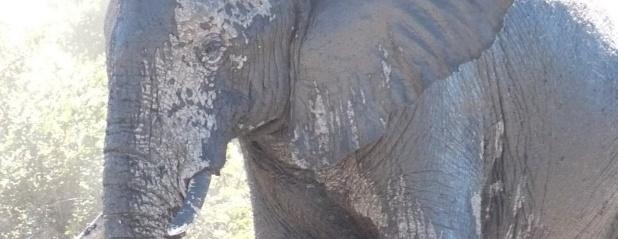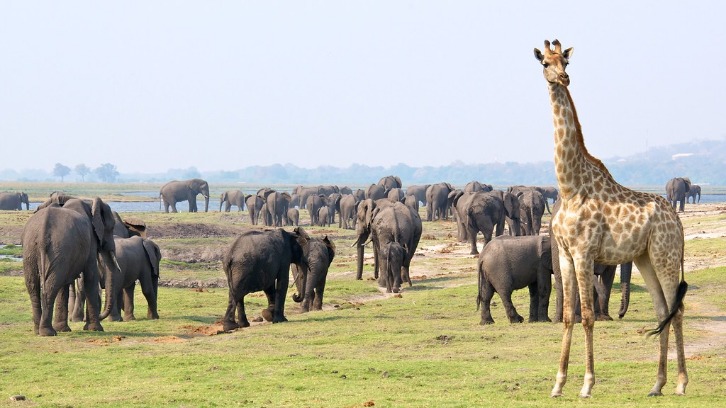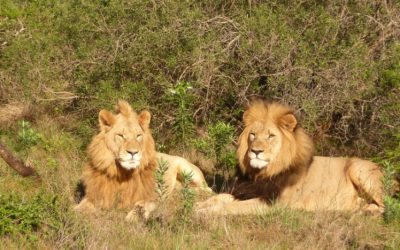Overview of Botswana’s Elephant Population
Botswana hosts one of the largest elephant populations in Africa, making it a vital area for elephant conservation efforts. The country’s vast savannahs and protected reserves provide an ideal habitat for these majestic creatures. Understanding the dynamics of Botswana’s elephant population is crucial for sustainable management and ensuring the preservation of this iconic species for future generations.
Geographical Distribution of Elephants in Botswana
Botswana is renowned for its abundant elephant population, making it one of the top destinations for elephant conservation in Africa. The country’s elephant numbers are estimated to be over 130,000, representing a significant portion of the continent’s elephants. This large population underscores Botswana’s importance as a key habitat for these majestic creatures and highlights the country’s efforts to preserve them amidst increasing challenges.
The geographical distribution of elephants in Botswana is primarily concentrated in the northern regions, particularly within the Chobe National Park, which is famous for its high density of elephants. The Okavango Delta, another crucial habitat, supports large herds due to its vast water resources and lush ecosystem. Other notable areas include the Moremi Game Reserve and the Nxai Pan National Park. Elephants also roam into the Makgadikgadi Pans, although these regions support smaller populations due to the more arid environment. The distribution patterns are influenced by availability of water, food sources, and protection efforts, resulting in dense groups near water bodies and grazing areas while avoiding the more remote desert-like zones.
Historical Population Trends
Botswana is renowned for having one of the largest and most stable elephant populations in Africa. The country’s vast and diverse landscapes provide ideal habitats for elephants, contributing to their thriving numbers. Over the years, Botswana’s commitment to conservation has played a significant role in maintaining and supporting this large population.
Historically, the elephant population in Botswana experienced fluctuations due to factors such as poaching, human-wildlife conflict, and habitat loss. In the early 20th century, populations were relatively low but began to increase following the establishment of protected areas and conservation initiatives in the late 20th century. Since then, the population has shown a steady upward trend, making Botswana a key country for elephant conservation efforts in Africa.
Recent estimates suggest that Botswana’s elephant population exceeds 130,000 individuals, representing a significant portion of the continent’s total. This growth underscores the effectiveness of conservation measures but also raises concerns about potential human-wildlife conflicts and ecological impacts, prompting ongoing efforts to balance elephant numbers with sustainable ecosystem management.
Current Population Estimates
Botswana is home to one of the largest and most significant populations of elephants in Africa, making it a crucial region for elephant conservation efforts. These majestic animals play a vital role in maintaining the ecological balance of the country’s national parks and protected areas.
- The current estimated population of elephants in Botswana is approximately 130,000 to 135,000 individuals, representing a substantial portion of the continent’s overall elephant population.
- In recent years, Botswana’s elephant numbers have increased, partly due to effective conservation policies and anti-poaching measures.
- Major elephant populations are concentrated in national parks such as Chobe, Moremi, and the Okavango Delta, which provide essential habitat and resources.
- While the growing population indicates successful conservation efforts, it also presents challenges related to human-wildlife conflict and habitat management.
- Researchers and conservationists continue to monitor population trends closely to ensure sustainable coexistence between humans and elephants in Botswana.
Factors Influencing Elephant Population
The population of elephants in Botswana is influenced by a variety of environmental, biological, and human-related factors. Understanding these elements is essential for effective conservation efforts and sustainable management of the species. Factors such as habitat availability, poaching, climate change, and human-wildlife conflict play significant roles in shaping the elephant populations within the region.
Habitat Availability and Changes
The elephant population in Botswana is significantly influenced by a variety of factors related to habitat availability and changes. One primary factor is habitat loss caused by human activities such as agriculture, urbanization, and infrastructure development, which reduce the natural space available for elephants to roam and feed. Additionally, climate change impacts, including droughts and changing rainfall patterns, can alter the vegetative landscape, affecting the availability of water and food sources crucial for elephant survival. Poaching and illegal wildlife trade further threaten population numbers by directly reducing individual numbers and disrupting social structures. Conservation efforts, protected areas, and anti-poaching measures are vital in maintaining and supporting the growth of Botswana’s elephant populations amidst these challenges. Ultimately, sustainable land management and addressing environmental threats are essential to ensure healthy and resilient elephant populations in Botswana.
Water Resources and Their Impact
The elephant population in Botswana is significantly influenced by various factors, including water resources and environmental conditions. Adequate water availability is crucial for elephant survival, especially in arid regions where water sources can be scarce. Seasonal variations and climate change can lead to fluctuations in water supply, affecting elephant movement and distribution. Limited water sources often result in increased competition among elephants, leading to potential stress and habitat degradation. Conversely, areas with abundant and sustainable water sources support healthier and larger populations. Human activities such as agriculture, water extraction, and infrastructure development also impact water resources, further influencing elephant habitats. These factors collectively shape the growth, health, and migration patterns of elephants in Botswana, highlighting the importance of water management in conservation efforts. Ensuring a balance between water resource availability and habitat preservation is vital for maintaining a stable and thriving elephant population in the region.
Human-Elephant Conflicts
The elephant population in Botswana is influenced by various factors that shape their growth and distribution. Natural factors such as habitat availability, water sources, and food supply play a crucial role in determining elephant numbers. Additionally, seasonal changes and climate variability can impact their migratory patterns and reproduction rates. Human activities have significant effects, including poaching, habitat destruction, and land-use changes, which threaten elephant populations. Human-elephant conflicts arise when elephants venture into agricultural areas or become close to human settlements, often causing damage to crops and property, and sometimes resulting in injuries or fatalities among both humans and elephants. Conservation efforts in Botswana aim to manage these conflicts through community engagement, habitat management, and anti-poaching measures, ensuring a sustainable coexistence between humans and elephants in the region.
Poaching and Illegal Wildlife Trade
The elephant population in Botswana is significantly impacted by various factors, including poaching and the illegal wildlife trade. Poaching remains one of the primary threats, driven by the high demand for ivory and other tusk products in international markets. This illegal activity leads to a drastic reduction in elephant numbers, disrupting social structures and breeding patterns. Additionally, habitat loss due to human expansion, agriculture, and infrastructure development further constrains the available space for elephants to thrive. Climate change also plays a role by affecting water sources and forage availability, making survival more challenging. Conservation efforts in Botswana face these complex challenges, requiring strict anti-poaching measures, community involvement, and sustainable land use policies to protect and sustain its elephant populations.
Conservation Efforts and Policies
Conservation efforts and policies play a crucial role in protecting wildlife and maintaining ecological balance. In Botswana, a country renowned for its diverse wildlife, these initiatives are vital for safeguarding the iconic elephant population. Through stringent regulations, community involvement, and international cooperation, Botswana strives to ensure the enduring survival of its elephants amidst challenges such as poaching and habitat loss.
Protected Areas and National Parks
Conservation efforts and policies in Botswana have played a crucial role in protecting its iconic elephant population. Recognizing the importance of preserving these majestic animals, the government and various organizations have implemented measures to ensure their survival and sustainable management.
- Establishment of protected areas and national parks, such as Chobe National Park and Moremi Game Reserve, to provide safe habitats for elephants.
- Strict anti-poaching laws and enforcement to combat illegal poaching and illegal wildlife trade.
- Community-based conservation programs that involve local communities in elephant protection efforts, offering benefits and incentives to discourage illegal activities.
- Transboundary conservation initiatives with neighboring countries to facilitate the migration and genetic diversity of elephant populations across borders.
- Research and monitoring projects to track elephant populations, health, and movement patterns, informing adaptive management strategies.
- Public education campaigns aimed at raising awareness about the importance of elephants and the threats they face, fostering a culture of conservation.
Overall, Botswana’s comprehensive approach to conservation, combined with the protection of its pristine natural habitats, has helped maintain one of Africa’s largest remaining elephant populations, ensuring their survival for future generations.
Anti-Poaching Strategies
Conservation efforts and policies in Botswana have been instrumental in protecting its elephant population, recognizing the species as a vital component of the country’s biodiversity. The government, along with international organizations, has implemented various strategies to ensure the sustainable management of elephants, balancing human needs with wildlife preservation.
- Implementation of National Parks and Protected Areas: Botswana has established extensive national parks such as Chobe, Moremi, and Tsodilo, providing safe habitats for elephants and other wildlife.
- Legal Framework and Policy Development: Laws such as the Wildlife Conservation and National Parks Act regulate the hunting, trade, and management of wildlife, including strict anti-poaching measures.
- Community-Based Conservation Programs: Initiatives like Community Trusts involve local communities in conservation efforts, offering economic incentives to protect elephants.
- Anti-Poaching Strategies: Enforcement of anti-poaching laws is strengthened through increased patrols, surveillance technology, and collaboration with wildlife agencies to combat illegal hunting.
- Use of Technology: Deployment of drone surveillance, camera traps, and GPS tracking has enhanced monitoring and response capabilities for poaching incidents.
- Educational and Awareness Campaigns: Public education about the importance of elephants and the threats they face helps garner support for conservation policies.
- International Collaboration and Funding: Botswana partners with organizations like the World Wildlife Fund and CITES to secure funding and expertise for anti-poaching and conservation projects.
- Transboundary Conservation Initiatives: Collaborations with neighboring countries facilitate wildlife corridors and joint anti-poaching patrols, ensuring elephants can migrate safely across borders.
- Population Monitoring and Research: Regular scientific assessments help track elephant numbers, health, and migration patterns, informing adaptive management strategies.

Community Involvement and Ecotourism
Conservation efforts and policies in Botswana have been crucial in protecting the country’s thriving elephant population. The government has implemented strict anti-poaching laws and established protected areas such as national parks and Wildlife Management Areas to ensure the safety and sustainability of elephants across the region.
- Community involvement plays a vital role in elephant conservation, with local residents participating in monitoring wildlife, reporting illegal activities, and benefiting from conservation initiatives.
- Ecotourism is a significant strategy in Botswana, promoting eco-friendly travel experiences that generate revenue for conservation while raising awareness about protecting elephants and their habitats.
International Support and Collaboration
Conservation efforts and policies in Botswana have played a crucial role in the preservation of its elephant population. The government has implemented strict anti-poaching laws and established protected areas such as national parks and game reserves to safeguard these majestic animals. Additionally, community-based conservation programs encourage local communities to participate in protecting elephants, fostering a sense of shared responsibility and sustainable coexistence.
International support and collaboration have significantly contributed to Botswana’s elephant conservation initiatives. Organizations like the World Wildlife Fund (WWF) and the Wildlife Conservation Society (WCS) provide funding, technical expertise, and research support to bolster local efforts. Cross-border partnerships with neighboring countries facilitate regional strategies to combat poaching and illegal wildlife trade, ensuring the long-term sustainability of Botswana’s elephant populations. These collaborative efforts help raise awareness worldwide and attract tourism, which further supports conservation funding and community development.
Impacts of Elephant Population on Ecosystems
The elephant population in Botswana plays a crucial role in shaping the health and dynamics of local ecosystems. As one of the largest aggregations of elephants in Africa, these majestic animals influence various environmental processes, from vegetation control to water resource management. Understanding their impact is essential for sustainable conservation efforts and maintaining ecological balance in the region.
Vegetation and Habitat Alteration
The elephant population in Botswana has a significant impact on local ecosystems, influencing vegetation dynamics and habitat structure. As keystone species, elephants play a crucial role in shaping the environment, which in turn affects biodiversity and ecological balance.
- Elephants contribute to habitat alteration through their foraging behavior, which involves uprooting trees and browsing on shrubs, leading to changes in vegetation composition.
- This activity creates open spaces that benefit other species by increasing habitat diversity and promoting the growth of grasses and succulents.
- Overpopulation of elephants can result in over-browsing, causing deforestation and land degradation, which negatively affects other wildlife and plant communities.
- Altered vegetation and habitat conditions can influence water availability, as elephants often dig for water and modify water sources, impacting aquatic ecosystems.
- In Botswana, managing the growing elephant numbers is essential to prevent ecological imbalance, preserve biodiversity, and sustain healthy habitats for future generations.
Interactions with Other Species
The elephant population in Botswana has a profound impact on local ecosystems, influencing various environmental processes and species interactions. As keystone species, elephants alter the landscape through their feeding habits, such as uprooting trees and clearing vegetation, which helps maintain biodiversity by creating diverse habitats. This activity can promote the growth of grasses and open spaces, benefiting species that depend on such environments. Elephants also affect water availability, digging waterholes that serve multiple species during dry seasons. However, an overabundance of elephants in Botswana can lead to habitat degradation, threatening plant communities and reducing resources for other herbivores and wildlife. Their interactions with other species are complex; they compete for food with smaller herbivores and may displace other animals from vital areas, influencing species distribution and ecosystem balance. Overall, the population size and health of elephants in Botswana are crucial in shaping the ecological dynamics and maintaining the health of their habitats.
Role in Ecosystem Health and Biodiversity
The elephant population in Botswana plays a crucial role in shaping the health and biodiversity of local ecosystems. As keystone species, elephants influence the structure of habitats through activities such as browsing, trunking, and creating waterholes, which benefit numerous other species. Their movements help disperse seeds and promote forest regeneration, contributing to habitat diversity. A balanced elephant population maintains ecosystem stability, but overpopulation can lead to habitat degradation, reduced plant diversity, and altered water sources. Conversely, a decline in elephants may result in overgrown vegetation, decreased habitat for certain species, and diminished overall biodiversity. Therefore, the presence and management of elephants in Botswana are vital for sustaining ecosystem resilience, health, and biodiversity in the region.
Challenges and Future Outlook
The Botswana elephant population faces numerous challenges that threaten their long-term survival, including habitat loss, human-wildlife conflict, and climate change. As the largest elephant population in Africa, Botswana’s elephants are vital to the region’s ecological balance. Understanding these challenges and exploring future strategies is essential for ensuring the preservation of this iconic species for generations to come.
Potential Threats to Population Stability
The elephant population in Botswana faces several challenges that could threaten its long-term stability. Poaching remains a significant threat due to illegal ivory trade, despite strong conservation efforts. Habitat loss stemming from agricultural expansion, human settlements, and infrastructure development further exacerbates the situation, limiting food and water resources for elephants. Climate change also poses a looming risk by altering rainfall patterns and reducing water availability, which can impact elephant migration and survival. Additionally, human-wildlife conflict arises as growing human populations encroach on elephant habitats, leading to negative interactions and potential casualties on both sides.
Looking ahead, the future of Botswana’s elephant populations depends on effective management strategies, enforcement of anti-poaching laws, and sustainable land-use planning. Strengthening community involvement and ecotourism can provide economic incentives to preserve elephants and their habitats. Nevertheless, potential threats such as increased poaching, climate change, and habitat degradation require continuous monitoring and adaptive conservation approaches to ensure that Botswana’s elephants remain a vital part of the country’s natural heritage and ecological balance.
Innovations in Conservation Technologies
Despite significant efforts to protect the elephant populations in Botswana, the country faces ongoing challenges such as poaching, human-wildlife conflict, and habitat loss. These issues threaten the sustainability of elephant populations and require comprehensive conservation strategies. Advances in technology offer promising solutions, including the use of drones for surveillance and monitoring, AI-powered data analysis to track elephant movements, and innovative anti-poaching devices. Looking ahead, continued investment in these technologies, along with community engagement and policy support, will be crucial for ensuring the long-term preservation of Botswana’s elephants. Embracing these innovations can enhance the effectiveness of conservation efforts and contribute to a balanced coexistence between humans and wildlife.
Forecasting Population Trends
The challenges in forecasting the population trends of elephants in Botswana primarily revolve around habitat loss, human-wildlife conflict, and poaching. These factors threaten the stability of elephant populations and complicate accurate predictions for the future. Additionally, climate change impacts, such as droughts and changing rainfall patterns, can alter food and water availability, influencing population dynamics.
Looking ahead, adopting advanced monitoring technologies like drone surveillance and genetic analysis can improve data accuracy and help conservationists better understand population movements and health. Integrating these data into sophisticated models will allow for more precise forecasting, enabling proactive management strategies. The future outlook for Botswana’s elephant population depends heavily on effective anti-poaching measures, community involvement, and habitat conservation efforts. Continued commitment is essential to ensure sustainable elephant populations amid environmental and anthropogenic challenges.
Strategies for Sustainable Coexistence
The Botswana elephant population faces numerous challenges that threaten its long-term sustainability, including habitat loss, human-wildlife conflict, poaching, and climate change. Addressing these issues requires strategic planning and collaboration among governments, conservation organizations, and local communities to ensure the coexistence of humans and elephants.
Future outlook for Botswana’s elephants depends on effective conservation efforts and innovative solutions. By implementing sustainable practices and strengthening protective measures, Botswana can maintain healthy elephant populations while supporting local livelihoods.
- Enhancing protected area management to create larger, interconnected habitats for elephants.
- Strengthening anti-poaching initiatives through increased patrols, technology, and international cooperation.
- Promoting community-based conservation programs that involve local residents in safeguarding wildlife.
- Developing strategies to mitigate human-elephant conflicts, such as interference barriers and crop protection techniques.
- Addressing climate change impacts by improving water resource management and habitat resilience.
- Fostering research to better understand elephant migration patterns and behavior.
- Implementing adaptive management policies that respond to changing environmental and social conditions.
- Encouraging regional collaboration to ensure the protection of elephants across borders.
- Raising awareness and educating the public about the importance of elephants in ecosystem health.
- Securing sustainable funding sources for ongoing conservation projects and initiatives.





0 Comments